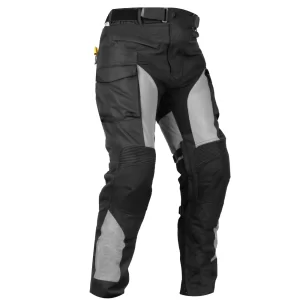Subscribe my Newsletter for new blog posts & tips. Let's stay updated!
West Bengal, a state located in the eastern part of India, is a beautiful blend of vibrant city life, peaceful countryside, and rich cultural heritage. From the heights of the Darjeeling Himalayas to the calm beaches of the Bay of Bengal, the state offers a variety of experiences for every traveller. West Bengal is a state that will captivate your senses and leave you with lasting memories. It is a destination that promises a diverse range of experiences, blending modernity with tradition. Whether you’re passionate about history, a nature lover, or a foodie, West Bengal has something special for you.
Things to Know
West Bengal’s territory extends from the Himalayas in the north to the Bay of Bengal in the south. Key geographical features include the Darjeeling hills, the Sundarbans mangroves, and fertile Gangetic plains. From the bustling metropolis of Kolkata, once the capital of British India, to the tea gardens of Darjeeling, West Bengal offers a diverse travel experience. The tropical southern regions of West Bengal offer a diverse experience. Where the mangrove-lined, wildlife-rich waterways of the Sundarbans compete for attention with Bishnupur’s terracotta Hindu temples and the artistic, cultured atmosphere of Shantiniketan.
The capital of West Bengal is Kolkata (formerly Calcutta).
Language: Bengali (Bangla) is the primary language, known for its poetical and melodic nature, often referred to as the “language of emotions”. It is the second-most spoken language in India and the seventh-most spoken language globally. English and Hindi are commonly spoken in urban areas. English serves as a secondary official language. English is widely used in education, government and business.
People: Bengalis are known for their friendliness and welcoming nature. Hospitality is deeply rooted in their culture, often expressed through sharing food and stories. Education is highly valued among Bengalis.
Culture and Traditions: The state is renowned for its classical dance, music, and art forms. West Bengal has a strong literary tradition. It is the land of Rabindranath Tagore, the first Asian Nobel laureate, and Satyajit Ray, a legendary filmmaker. Kolkata is a major cultural hub with a thriving arts scene, including renowned theatres, art galleries, and music venues.
Festivals & Celebrations: You can feel the heartbeat of West Bengal all year long, thanks to its vibrant and diverse festivals. Durga Puja, the grandest and most awaited festival of Bengal, is marked by worshipping Goddess Durga. Extravagantly decorated pandals and artistic idols attract visitors from across the globe. Some other popular festivals include: Kali Puja, Diwali (festival of lights), Pohela Boishakh (Bengali New Year), Holi (festival of colours), Saraswati Puja, Christmas, Eid al-Fitr, Muharram, Poush Mela, Rath Yatra, and Gangasagar mela. These are just a few of the many festivals that bring colour and joy to West Bengal. Whether you’re a spiritual seeker, a culture enthusiast, or a curious traveller, these celebrations promise unforgettable memories. Click here to learn more about Bengali festivals.
Money and Cost
West Bengal is a very affordable place to visit. The cost of travelling in West Bengal may vary depending on your travel style, duration, and comfort preferences. This blog provides you helpful tips on budgeting, accommodation, transportation, and local experiences to help you plan an unforgettable and affordable journey.
Accommodation
- Budget: 400 INR to 1000 INR ($5 to $12) per night
- Mid-range: 1000 INR to 5000 INR ($12 to $60) per night
- Luxury: 5000 INR + ($60 +) per night
Meal for one
- Budget: 50 INR to 200 INR ($1 to $3)
- Mid-range: 200 INR to 1000 INR ($3 to $12)
- Luxury: 1000 INR + ($12 +)
Transport
Autorickshaw, local taxi, bus, train, metro rail, privet cab, flight, UBER, OLA, Rapido etc. are available.
- Autorickshaw, local bus, local train: 20 INR to 200 INR ($0.3 to $3)
- Intercity bus, train: 500 INR to 5000 INR ($6 to $60)
- Privet cab, UBER, OLA: 300 INR to 1000 INR ($5 to $12) per 10Km
- Bike rentals: 500 INR to 3000 INR ($6 to $40) per day
- Ferry service: In some places, passenger ferry services are available for short routes.
Average daily cost: 2000 INR to 20,000 INR ($25 USD to $250 USD).
Best Time to Visit
The best time to visit West Bengal depends on your priorities.
December to March (Winter): This is considered the most pleasant time to visit. The weather is cool and dry, making it ideal for exploring the state’s diverse landscapes, from the bustling cities to the serene hills. Winter is ideal for trekking in the Himalayas, sightseeing, and cultural exploration. Enjoy the scenic beauty of Darjeeling, Kalimpong, and the Dooars region with clear skies. Perfect time for wildlife buffs to visit the Sundarbans and spot the Royal Bengal Tiger.
March to May (Spring): Spring offers pleasant weather in many parts of the state, with blooming flowers and comfortable temperatures. However, be prepared for some heat in the plains. Spring is perfect for enjoying the tea gardens of Darjeeling and sea beaches like Digha and Mondarmani.
April to June (Summer): Warm in the plains (25°C to 44°C) but pleasant in hill stations like Darjeeling and Kalimpong (15°C to 25°C). Escape to the cool tea gardens of Darjeeling and enjoy breathtaking views of the Kanchenjunga. Participate in the vibrant celebrations of Pohela Boishakh (Bengali New Year) in April.
July to September (Monsoon): The monsoon brings a fresh wave of life to the state, especially the lush countryside and tea estates. Temperatures range from 25°C to 35°C. Experience the serene beauty of rain-washed landscapes in the Dooars and Sundarbans. A great time for budget travelers, as tourism is less crowded during this period. While rainfall can be heavy, this is the off-season, offering lower prices on accommodation and fewer crowds.
September to December: Witness the grandeur of Durga Puja, Kali Puja, Diwali and the vibrant Kolkata Christmas Festival in December. Cultural fairs like the Poush Mela and spiritual gatherings like the Gangasagar Mela add a unique charm.
No matter when you visit, you’ll find that West Bengal welcomes you with open arms, offering something special.
How to Reach
West Bengal is well-connected to the rest of India and the world, making it easily accessible for travellers. Here’s how you can reach this state:
By Air: Netaji Subhas Chandra Bose International Airport (Kolkata) is the main international airport serving West Bengal, with excellent connectivity to major Indian cities and international destinations. Other major airports are Bagdogra Airport (Siliguri) and Kazi Nazrul Islam Airport (Durgapur).
By Train: West Bengal has an extensive and well-connected railway network. Howrah and Sealdah Stations (Kolkata) are two of India’s busiest railway hubs, offering connectivity to all parts of the country. Luxury trains like the Rajdhani Express and Duronto Express provide a comfortable travel experience. New Jalpaiguri Station (NJP) is the gateway to North Bengal, including Darjeeling and Sikkim. Other major railway stations are Durgapur railway station, Kolkata railway station, and Siliguri railway station.
By Road: A network of national highways and state highways connect West Bengal to neighbouring states like Assam, Jharkhand, Odisha and Bihar. Government and private bus services are available within the state and to neighbouring states. There are roads that also connect the state with bordering countries like Nepal, Bhutan and Bangladesh.
By Water: The Hooghly River plays a significant role in Kolkata’s history and transportation.
Safety in West Bengal
West Bengal is generally considered a safe destination for tourists. You’ll find the people in West Bengal are warm and helpful, often willing to help travellers with directions or advice. However, like any major tourist destination, it’s essential to take some basic safety precautions while travelling in West Bengal. Most tourist spots in West Bengal, including Kolkata, Darjeeling, and Shantiniketan, are safe for visitors. Crimes like pickpocketing or bag snatching can occur, so Keep an eye on your valuables, especially in crowded areas.
Women can travel comfortably, but it’s advisable to avoid isolated areas after night. Public transport, including buses, taxis, and Kolkata’s iconic metro, is generally safe. Always use registered cabs and pre-booked transportation whenever possible. Respect local traditions and religious practices, especially during festivals and when visiting temples.
Be aware of the monsoon season. Heavy rainfall may cause flooding in some areas. Stay updated with weather forecasts and follow any advisories issued by local authorities.
Historical Overview
If you look back, West Bengal’s history is a compelling mix of ancient civilizations, colonial rule, and revolutionary movements. It was once part of the powerful Magadha Empire and later ruled by various dynasties. In the 18th century, Bengal became an important part of British India, and Kolkata was its capital until 1911. During British rule, Bengal became a focal point of India’s independence struggle. Netaji Subhas Chandra Bose, the revolutionary leader born in Cuttack but deeply associated with Bengal, emerged as one of its most iconic figures. The Bengal became a hub of intellectual and cultural growth, led by luminaries like Rabindranath Tagore and Raja Ram Mohan Roy.
Following India’s independence in 1947, West Bengal was formed as a new state, had to overcome challenges from the partition, and started its way in the modern era. Today, it stands as a vibrant cultural and historical hub, blending its rich heritage with modernity.
Pick a Destination in West Bengal
Travel
Video Gallery
Subscribe Newsletter
- Popular Products
- New Products
- Recently Viewed




















